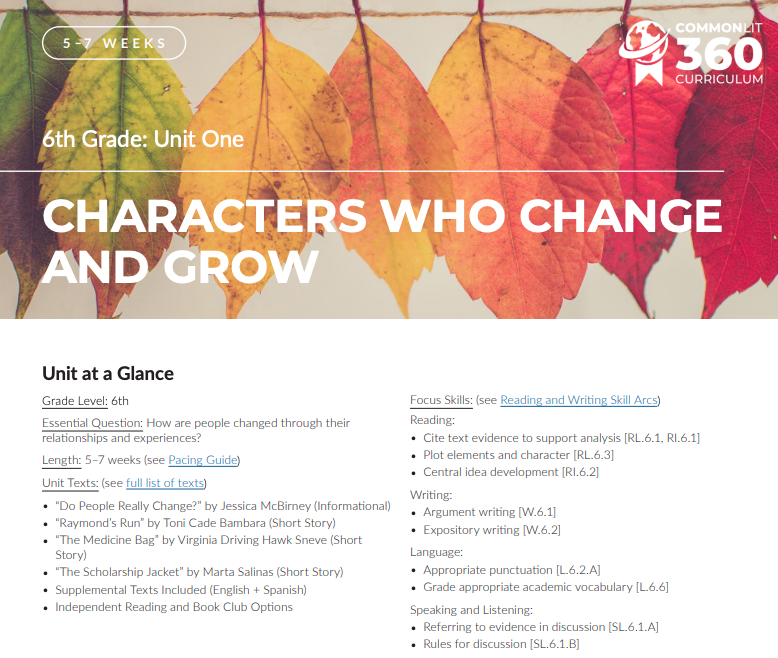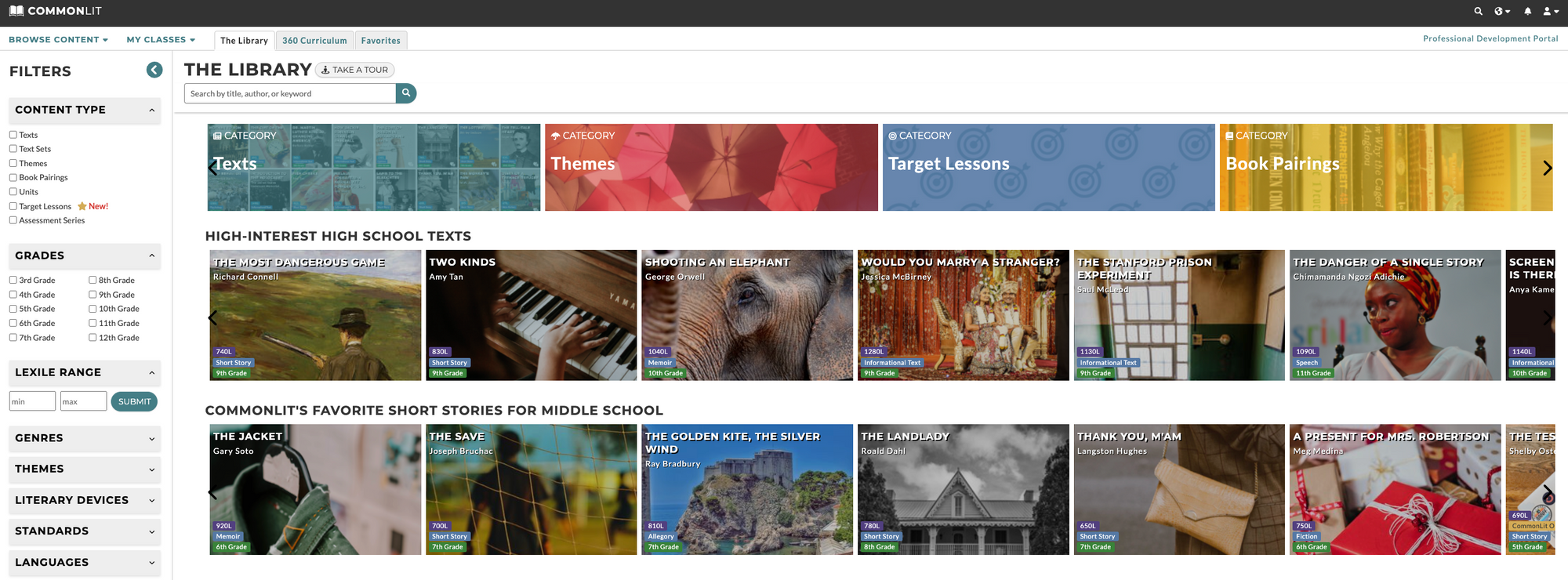Our framework for creating culturally-responsive materials
I. Our Mission
CommonLit is a nonprofit organization. Our mission is to ensure that all students graduate high school with the reading, writing, critical thinking, collaboration, and communication skills they need to succeed in life. One of the ways that we approach this mission making our tool accessible to all students is by making it completely free so that students in low-income, traditionally marginalized, and under-resourced schools can benefit from it. Since 2016, we have grown to serve over 80,000 schools, and 57% are Title I eligible. In 2018, responding to the growing need to better support English Language Learners, we began building CommonLit Español with over 00 authentic texts in Spanish. Learn more about how CommonLit 360 supports English Language Learners here.
A second way that CommonLit achieves its mission is by setting the bar extremely high on quality. We approach text selection with intentionality. Our goal in providing a culturally-responsive ELA curriculum is to give students “windows and mirrors” into the world, exposing them to a diversity of characters, authors, and walks of life.
We believe that when a curriculum is constructed with care, students leave the classroom feeling more curious about and conscious of the world around them.
In short, literature is a powerful mechanism that can change hearts and minds. We hope that our 360 Curriculum reflects our values for the goal of helping our children become empathetic and thoughtful adults.
II. Diverse Representation
CommonLit’s 360 Curriculum aims to be culturally responsive through its text selection. During the text selection phase of unit development, we strive for diverse authorship and representation in characters and topics. Over 50% of the texts featured in CommonLit’s 360 Curriculum are written by an author of color and/or feature protagonists of color. Authors and characters represent a range of racial identities and cultural experience, including: Black, Latinx, Native American, Middle Eastern, and Asian/Pacific Islander. We also partner with organizations to ensure that our curriculum to connect students to the African American experience (e.g. U.S. Poet Laureate Rita Dove), the Hispanic American experience (e.g. Gary Soto), the Native American experience (e.g. through partnership with the American Native Press Archives), the Asian American experience (e.g. Amy Tan), the experience of immigrant families (e.g. Naomi Shahib Nye), the experience of disabled people (e.g. through partnership with 2gether International), the experience of women (e.g. Kate Chopin), and the experience of Americans in the military (e.g. Library of Congress Veterans History Project). Second, CommonLit’s model frees teachers to use their professional judgment to choose works appropriate to their individual students’ reading levels, interests, backgrounds, and special needs.
CommonLit’s curriculum also showcases diverse voices across a range of subjects. For example, while the STEM and research field is notorious for lacking female voice and representation, over 50% of CommonLit’s research unit materials were authored by women.

III. “Windows and Mirrors”
CommonLit’s ELA curriculum is primarily designed to be content-rich. Each unit is designed to build critical background knowledge so that students walk away from every unit with a deep and nuanced understanding of a key topic or theme. For example, in a 10th grade unit, Literature in the Time of War, students read excerpts from The Things They Carried by Tim O’Brien about a platoon of American soldiers fighting in the Vietnam War. Students discover common themes about memory and loss, learn about post-traumatic stress, and read deeply about the causes and legacy of the Vietnam War from primary sources. Some of the units we write include texts that act as “mirrors” for students, reflecting familiar themes, characters, and voices that validate their own experience. Other units are “windows” that expose students to different points of view, customs, and unfamiliar worlds.
IV. Local Flexibility
CommonLit’s curriculum is designed to be flexible for teachers, schools, and districts. The curriculum has clear points of flexibility. Teachers can easily enhance our unit and discussions with locally relevant content.
CommonLit’s free digital library of over 3,000 supplemental texts at a range of levels and from different genres is a wonderful resource to enhance every unit.

V. Stakeholder Voice
“The literary texts were engaging and students found it culturally relevant to their lives. To learn about themselves and how things could potentially influence them or impact their future was interesting.”
- 7th Grade Teacher in New York City
CommonLit’s unit development process is iterative; we revise every unit regularly based on the feedback collected from teachers, administrators, and students in the schools we support.
Throughout the unit development process, CommonLit conducted focus groups, collected surveys, and interviewed hundreds of teachers and students. We also offer live chat support to all teachers using our digital platform. This form of qualitative feedback, along with a rigorous revision process, positions our organization to rapidly respond to stakeholder needs.
Next Steps
If you’re interested in learning more about CommonLit’s 360 Curriculum, please email partnerships@commonlit.org.
We’re eager to support your team’s work.

